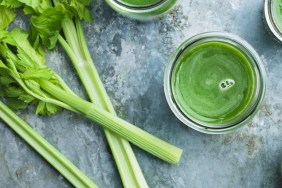California is going into its fourth year of drought with just one year of water stored in its reservoirs. As a result, Californians have been left to deal with mandatory water cuts, a first in the state’s history, and the nation is left with a questionable future for some of its most beloved crops including avocados, oranges, tomatoes and almonds. In fact, 80 percent of California’s water use is tied to agriculture and the Golden State supplies half the nation’s fruits and vegetables.
Some crops are more at risk than others. “It takes 72 gallons of water to grow a pound of avocados, compared to, for instance, nine gallons to grow a pound of tomatoes,” writes Adam Sternbergh in his recent in-depth look at the future of avocados in New York magazine, where he also points out that 98 percent of California is in a drought condition. While it’s too soon to tell the long-term impact, the water shortage has already caused higher production costs, leading farmers to reduce total acreage in some cases, which will eventually drive up prices. However, according to a report from the USDA, the effects do not occur immediately. “Price increases associated with a drought are lagged due to the time it takes for weather conditions and planting decisions to alter crop production. For example, a head of lettuce takes roughly two-and-a-half to three months to reach maturity. In 2005, following five years of drought, retail fruit prices rose 3.7 percent and retail vegetable prices increased 4 percent. Prices continued to rise in 2006, one year after drought conditions began to improve. However, it is important to keep in mind that many factors affect retail produce prices. Despite drought conditions, prices for fresh produce fell in 2009, as the 2007-09 recession reduced foreign and domestic demand for many retail food products.”
What does this mean for your wallet? In the near future, the outlook is good, with normal to slightly lower than average retail food price inflation projected to close out 2015 as researchers speculate that the strength of the U.S. dollar and lower oil prices will mitigate the effect of the drought conditions on produce. They nevertheless point to the fact that depending on its continued severity, “the drought in California has the potential to drive prices for fruit, vegetables, dairy, and eggs.” Unfortunately, the aforementioned potential seems all but certain. While farmers are exempt from the water rationing many have, according to a CBC news report, had their usual federal allocations of water reduced to zero. As a result, they’ve drawn more heavily on groundwater sources, which many scientists now say has hit the point of overuse. Again, this helps explain why we haven’t seen much of an impact on prices yet and why that may change very soon.
There seems to be no clear plan to tackle the water shortage and efficiently manage the limited resources currently available (California is, after all, a state so mismanaged that it ended up in bankruptcy), but the search is on to continually expand imports aimed to curb Stateside produce prices. For example, while over 80 percent of U.S. grown avocados are produced in California, 85 percent of the ones Americans actually consume hail from Mexico and Chile. We’re also seeing some farmers switch to more drought-friendly crops, including GMO seed varieties designed to thrive in soil with lower moisture content. Clearly there are a lot of factors at play and no one can say for certain what the future holds. But one thing’s for sure: Next time you want to reach for that Twinkie instead of the pint of strawberries, think twice and be grateful that for now you still have the option to make that choice.








